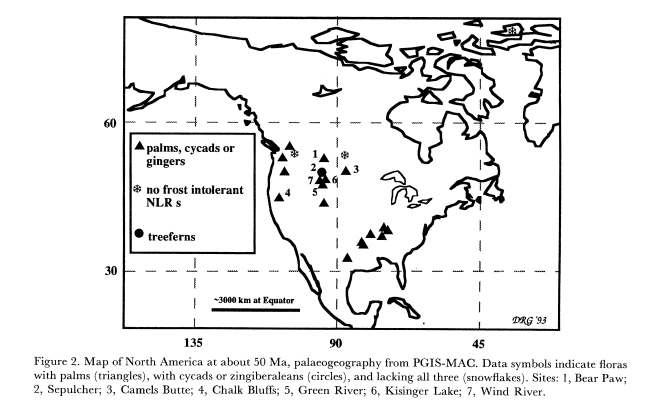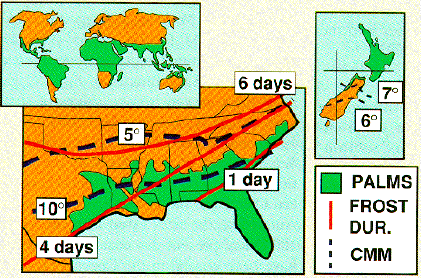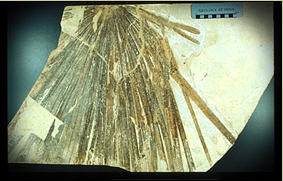Plant distributions depend heavily on the climate because all stages of a plant's life cycle must be able to tolerate the local climate for a population to exist (Greenwood and Wing, 1995). As a result, the fossils of some plants, such as palms and tree ferns, are excellent evidence for warm climates because these plants can only exist in "mild climates with rare frost" (Wing and Greenwood, 1993). Their natural habitats have average minimum temperatures warmer than -10°C, meaning the lowest temperature in an average year was no less than -10°C. Additionally, the average temperature in the coldest month of the year, or the cold-month mean (CMM) temperature, is greater than 5-7°C. Here is a map representing the distribution of some of these frost-intolerant plants.


Distribution of Frost Intolerant Plants during the Eocene (From Wing and Greenwood, 1993) (left) vs. Distribution of Frost Intolerant Plants in the Present (From Greenwood and Wing, 1995) (right)
As you can see, palms, cycads, and gingers have been found from roughly 30°N to almost 60°N in sediments dating back to about 50 Ma. Currently, however, they exist mainly between 0° and 30° paleolatitude. Using this data, scientists can estimate that at around 50 Ma, typical CMM temperatures were between 8°C and 10°C in areas between 45°N and 50°N, and mean annual temperatures (MATs) were between 12°C and 18°C (Wing and Greenwood, 1993). Therefore, these plants are extremely useful for rebuilding the Eocene's climate.

Palm Fossil From the Eocene (Image courtesy of the National Museum of Natural History)
